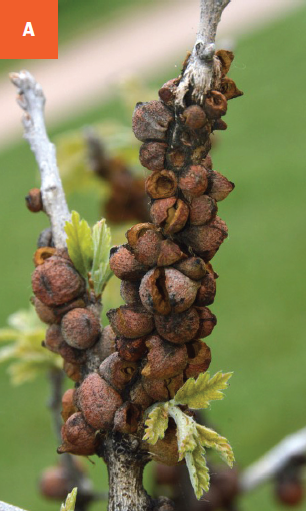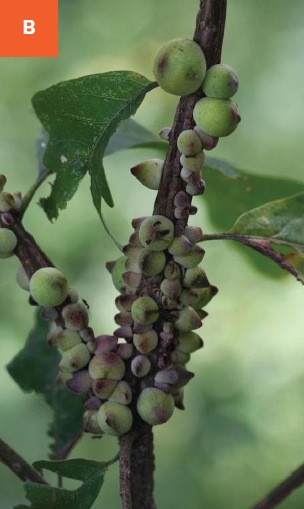Rough Bulletgall Wasp
Disholcaspis quercusmamma
HOST Bur oak, white swamp oak
DAMAGE/SYMPTOMS In the summer, dark green swellings will develop on the current season’s twigs, becoming almost knuckle-sized by August. The galls become woody on the branches. Branch dieback can occur with heavy infestations.
LIFE CYCLE There are two generations. A female-only generation (asexual generation) emerges from the hardened twig galls in late fall (late October through early November), and eggs are laid in the terminal growth of dormant buds. The following spring, as new shoot growth begins, pale- or cream-colored bud-shaped galls form (later turning a tan color), each containing an individual larva. Adult male and female wasps (sexual generation) emerge from these galls, mate, and lay eggs in the newly developing green twigs. After several weeks, dark green swellings appear and eventually form round galls. The galls are initially a reddish color but then turn brown and harden with subsequent development. A sweet substance similar to honeydew is released from the galls. Wasp larvae continue to feed and develop into pupae within the galls throughout the summer and into the fall.
MANAGEMENT The galls can cause dieback and significant damage if they become heavy on branches and start to weigh down the tree. Predators and parasitoid wasps are important for management of the pest. The active ingredient emamectin benzoate has been moderately effective in reducing future galling by the insects; however, the active ingredient is only commercially available, and it must be applied by a certified arborist. The wasps are difficult to control chemically because they are protected within the galls.
A Rough bulletgall wasp damage. B Early-season galls. C Adult wasp.



